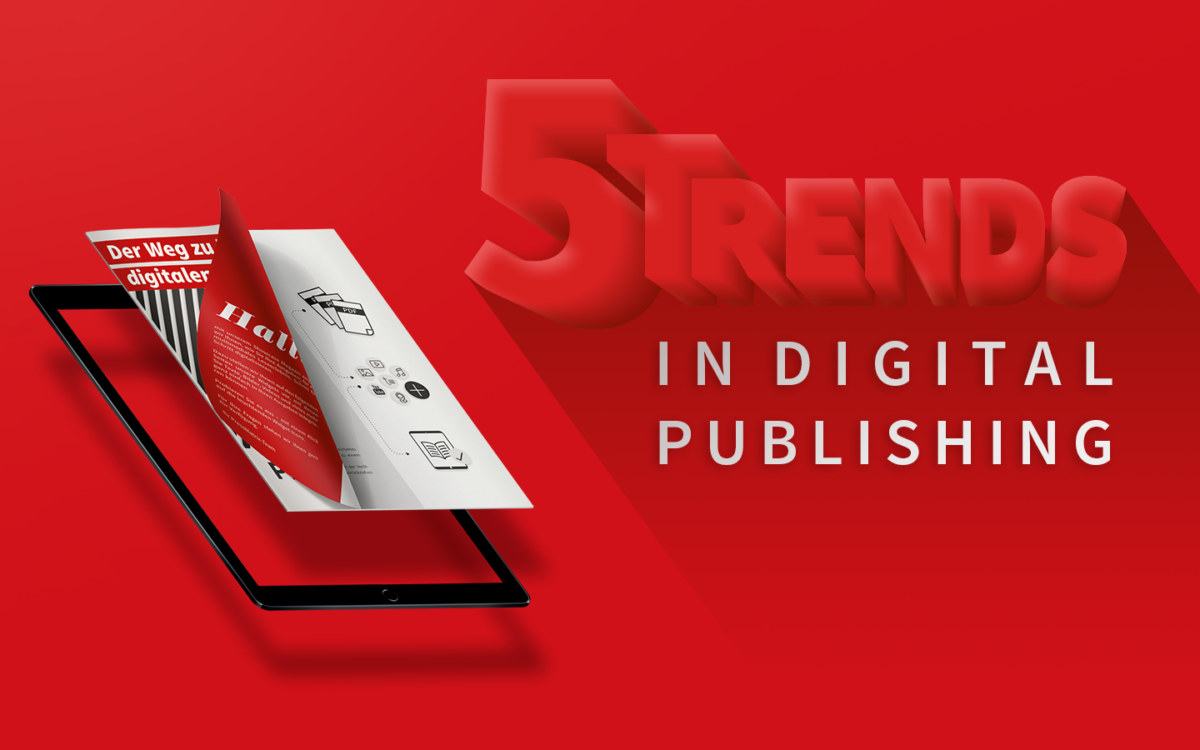The PressMatrix industry analysis
Author: Serdal Kutun, Head of Sales
Digital success is a multi-faceted concept, so how exactly this success is supposed to look will depend on the perspective of each individual creative. This means that not every digital innovation is a creative disruption for every media maker. Nonetheless: cherry-picking is all very well, but don’t forget to step back and admire the whole cherry tree. Here are five trends in digital publishing we believe are not going away anytime soon.

Burgeoning : podcasts
It was the trend last year and will only gain traction in the future: podcasts make content audible. When we’re out and about, consuming content in the form of audio files on our mobile devices is extremely convenient – a habit which has become second nature to many of today’s media users. From the media maker’s perspective, it means there is a lot to be said for starting up a podcast or an audio offer in general: the existing content can be meaningfully enriched; audio is suitable for distribution across various channels; and it has the potential to attract entirely new target groups. In order for a podcast to be found in the same way as classic content, full-text search must be possible. Although it is not yet a matter of course, first steps have been taken in this direction – and such developments will continue to fuel the podcast trend.

Relevant and easy to consume: what makes good content
Content is good when it is relevant in the eyes of the consumer and appears in the right format at the right time. In practice, this means that without digital solutions, potential customer groups are lost and the demand for traditional, regularly issued publications is on the decline. On the other hand it is notable that notwithstanding the flood of digital offers, high quality content is still very much a contender. The answer to dwindling demand for good classical content can be found – of all places – in the digital sphere. With a magazine app, special interest themes for specific target groups can be implemented and distributed in an improved and more flexible manner.

From paywalls to shoppable content: creative monetization models
Relevant and high quality content is one side of the coin. Business is the other. Publishing houses must earn money with their products. Having a lot of fans and followers on social media is good for the image, but the impact on business is often minimal. Subscribers, on the other hand, are genuinely interested in the content offered to them. Cultivating this (potential) customer group makes a lot more sense. This does not mean bombarding them with advertising and content, and a paywall is not always the best choice either. With the consistent emphasis on ones own thematic strengths along with targeted offers such as the purchase of individual articles, curated specials, premium additional features and the like, prospective customers can be won over – and transformed into actual customers. It is up to each media maker to work out their own individual balance.

Computer-aided decisions: when AI creates content
AI-based systems will analyse large amounts of data and base their suggestions and decisions on this. They can do it better and faster than the most experienced editor. But when exactly can an article, a post, or any other piece of content be considered successful? Is success measured by reach, shares, conversion, or its positive contribution to the image? This not only differs from media maker to media maker, but also from content to content. Flexible rating systems that optimize individual goals in conjunction with the needs of the target group could have a decisive impact on publishing strategy in the future. Such an approach will ensure more efficiency in content creation and distribution and at the same time help to make content appropriate for the relevant target groups.

In the age of data analytics: measuring and predicting success
AI-based systems will analyse large amounts of data and base their suggestions and decisions on this. They can do it better and faster than the most experienced editor. But when exactly can an article, a post, or any other piece of content be considered successful? Is success measured by reach, shares, conversion, or its positive contribution to the image? This not only differs from media maker to media maker, but also from content to content. Flexible rating systems that optimize individual goals in conjunction with the needs of the target group could have a decisive impact on publishing strategy in the future. Such an approach will ensure more efficiency in content creation and distribution and at the same time help to make content appropriate for the relevant target groups.
What might these five trends in digital publishing mean for you and your publication? What are your experiences? Let’s discuss it!

Serdal Kutun
Head of Sales
